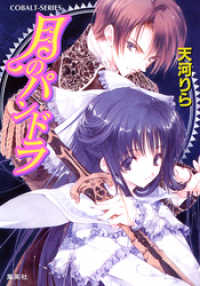- ホーム
- > 洋書
- > ドイツ書
- > Humanities, Arts & Music
- > Music
- > musical equipment
Description
(Text)
Keine romantische Dichtung, keine konkrete Märchenfigur gab den Anstoß zu dieser Komposition. Wir können heute davon ausgehen, dass der Titel der ursprünglich als "Romanzen" bezeichneten Stücke lediglich eine poetische, märchenhafte Welt heraufbeschwören sollte. Vermutlich angeregt durch Mozarts "Kegelstatt"-Trio KV 498 trug sich Schumann intensiv mit dem Plan eines Werks für diese aparte Besetzung, deren "eigenthümliche Wirkung" ihn begeisterte. Es vergingen jedoch fast drei Jahre, bis er die "mit guter Lust geschriebenen Stücke" an einen Verleger schickte. Die Erstausgabe enthielt alternativ zur Klarinette eine Violinstimme. Da diese Stimme von Schumann autorisiert wurde, liegt sie auch unserer Urtextausgabe bei._
(Table of content)
Märchenerzählungen für Klarinette in B (Violine), Viola und Klavier op. 132
(Text)
No romantic poetry and no concrete fairytale figure occasioned Schumann to write this composition. Today, we can assume that the title of the pieces, originally entitled "Romances", was merely supposed to conjure up a poetic and fairytale world.
Presumably inspired by Mozart's "Kegelstatt" Trio K. 498, Schumann occupied himself intensively with plans for a work for this distinctive combination of instruments, whose "unique effect" enthused him. Yet almost three years passed before he sent a publisher these works that he had "written with great pleasure". The first edition contained a violin part as an alternative to the clarinet. As this part was authorized by Schumann, it is also included in our Urtext edition._
(Table of content)
Fairy Tales for Clarinet in B flat (Violin), Viola and Piano op. 132
Aucun poème romantique, aucun personnage de conte particulier n'a incité Schumann à écrire cette composition. On peut supposer aujourd'hui que le titre de ces pièces tout d'abord intitulées «Romanzen» voulait seulement évoquer un monde poétique, féérique. Probablement inspiré par le «Kegelstatt-Trio» K. 498 - «Trio des Quilles» - de Mozart, Schumann avait nourri intensivement ce projet d'une oeuvre écrite pour cette formation particulière réunissant piano, clarinette et alto, et dont l'effet singulier l'enthousiasmait. Cependant, il fallut encore près de trois ans avant qu'il n'envoie à un éditeur ces «pièces écrites avec un bon plaisir». La première édition comportait alternativement à la clarinette une partie de violon. Comme cette partie a été autorisée par Schumann, elle est jointe également à notre édition Urtext._








